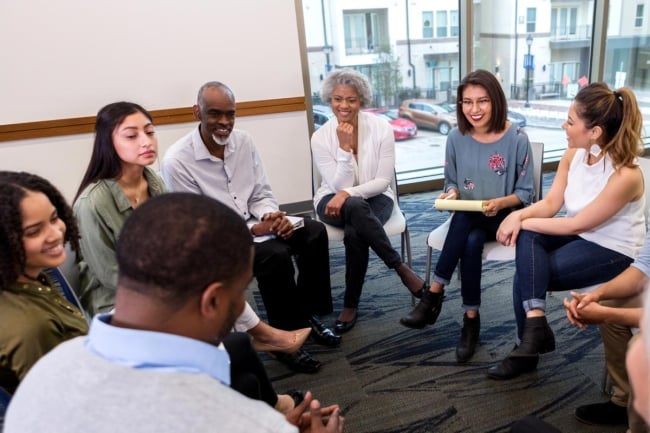You have /5 articles left.
Sign up for a free account or log in.

SDI Productions/Getty Images
The past year has brought both mental health and racial justice to the forefront for many college leaders. A November 2020 survey of college presidents from the American Council on Education found that more respondents rated the mental health of students as a pressing issue than said the same about spring enrollment numbers.
In 2017, the Jed Foundation and the Steve Fund released recommendations for campuses to better address the mental health of students of color in a document called the Equity in Mental Health Framework. Through a literature review and surveys, researchers found that Black students were more likely than their white peers to report feeling overwhelmed most or all of the time. First-year Black students were more likely than their white counterparts to say they tend to keep their feelings about the challenges of college to themselves. The 10 recommendations to address the unique experiences of students of color included creating top-level staff positions to support their well-being, engaging students to provide feedback on programs and sharing information between and within institutions.
Now the two organizations have completed a pilot program carrying out those recommendations over two years at 18 colleges and universities across the country.
“What this pilot project demonstrated is that mental health was important before the COVID-19 pandemic and will certainly be more critical to address post the pandemic, as we make sense of the racial trauma we have experienced and the impact this trauma will have on the mental health and well-being of students of color who are returning in the fall,” said Laura Sánchez-Parkinson, director of partnerships, programs and research at the Steve Fund, via email.
One of the major recommendations of the framework is to establish the mental health of students of color as a campuswide priority. About 80 percent of institutions that completed a survey after the pilot referenced the well-being of students of color in department or area goals, and about 27 percent included mention of it in strategic plans. All the colleges and universities surveyed students about mental health, and 93 percent of them worked to diversify counseling staff.
Many of the campuses similarly created advisory boards and groups focusing on mental health for students of color and started offering educational programming on issues like race-related stress and stereotype threat.
Sofia Pertuz, senior adviser at the Jed Foundation, said that many college leaders were grateful for the outside assistance. Having recommendations created benchmarks administrations could meet.
“When you have outside folks that collaborate with you on your campus, it strengthens the things you were already saying and already seeing in your own data,” she said.
Two of the most important aspects for a successful campus response that researchers noticed were buy-in from senior leaders and collaboration across departments and areas.
“It cannot be just one person or a few people. It really does need to be a campuswide priority. We’ve learned that when senior leaders were involved and provided resources, there were definitely better outcomes for the students,” Pertuz said. “People who have been struggling to point out the issues and have been just trying to say, ‘There’s something different here; we need to do something more to support students of color,’ finally felt validated and like they can say it out loud in settings where maybe it wasn’t a discussion before.”
The project did not come without challenges. The framework was originally designed to be carried out in an on-campus setting, but the pandemic made that more difficult. Institutions had to pivot to offering counseling and programming virtually, all while dealing with tight finances. It was a challenge at first to figure out how to hold programs like student affinity and support groups while still making them accessible and maintaining feelings of privacy, Pertuz said. But ultimately, virtual support groups were larger than they would have been on campus.
“Students who weren’t able to join some of the on-campus support group meetings were now able to join virtually because they didn’t have to worry about childcare or elder care. They didn’t have to travel. They didn’t have to stay late on campus,” she said.
Online offerings may be here to stay in some shape or form. Students were already creating group chats to find each other, she said. Colleges are just catching up to what they had already created.
Recruiting was also a challenge for some institutions, Pertuz said, as was maintaining programs while some staff might be furloughed due to finances.
“Some campuses, based on their location or their lack of diversity over all for their faculty and staff, it was really difficult for some of them to recruit faculty staff, and especially counselors of color to join their campuses,” she said.
Based on the results of the pilot project, the Steve Fund launched the Equity in Mental Health on Campus initiative, which seeks to help campuses collaborate and understand their racial narratives, said Sánchez-Parkinson. But for those people in higher education who are still working to build interest in programs like these, there are things they can do to support the mental health of students of color, she said.
“For those who are still working to build momentum on their campus, they can initiate conversations across units, provide training to faculty and staff, or address a specific policy that might be negatively affecting students of color,” she said via email. “What we saw is that once the conversation starts, campus leaders can build momentum and attain the buy-in necessary to create lasting investments and campus change.”








